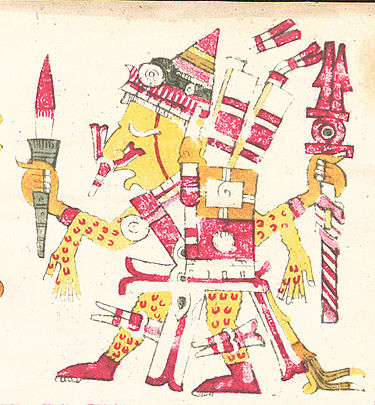
There are lots of articles and essays about new archaeology finds that are of interest to modern Pagans and Heathens out there, more than our team can write about in depth in any given week. Therefore, the Wild Hunt must unleash the hounds in order to round them all up. Here are our favorite picks this month.
A small, Roman-era statue of the Goddess Venus estimated to be around 2000 years old is considered one of the Worthing Museum’s best finds. It was found sometime in the 1960s in a flower bed and turned over to the museum last month.
The small figure, just about a finger’s length, was turned over to the museum by Albert Neal in December. His brother originally found the statue while digging in their mother’s flowerbed.
* * *
Researchers using the teeth of horses they were able to extract and analyze DNA from believe the majority of the horses were male. The teeth came from horses that were part of Viking burials from 17 different sites in Iceland. Trying to determine the sex of horses is often difficult without having complete, intact and very well-preserved skeletons. The ability to use DNA in this way may offer information more easily for researchers.
* * *
In other horsey news, a stable located just outside of the ancient city of Pompeii that had previously been excavated in Italy in the 1900s has been re-discovered. The remains of several horses were preserved in the same manner as the people who perished in the city). One complete horse still with saddle and harness has been unearthed as part of the find. The city of Pompeii was destroyed around 79 A.D. when Mount Vesuvius erupted releasing a pyroclastic flow that engulfed the Roman city and famously preserving the inhabitants in their poses by a “flash heating“.
* * *
News of a newly discovered circle of ancient standing stones in Scotland was released last week. The stone circle — thought to be between 3,500 and 4,500 years old — consists of 10 stones, each about 3 feet (1 meter) high, standing in a circle about 25 feet (7.7 m) across. The monument is located in a patch of farmland near the village of Alford, about 25 miles (40 kilometers) west of Aberdeen.
The circle is an excellent example of what is known as a “recumbent” stone circle, a style unique to the northeast of Scotland and the south-west of Ireland. One of reason it is so exceptional is due to all the stones being present. Usually when circles like this are found, only several stones remain. This style of stone monument has a large “recumbent” stone lying on its side between two upright stones, or “flankers,” in the southwest of the circle.
* * *
The BBC reports a temple dedicated to the God Xipe Tótec in central Mexico has been discovered. On the site, they also have uncovered a ceramic statue of the God and two large skulls carved from volcanic stone that may the earliest depictions of Xipe Tótec, dating somewhere between 900-1150 A.D. The name Xipe Tótec translates as “Flayed Lord” or “Flayed One” and is often depicted as wearing the skins of those he had skinned. He was also said to represent fertility and regeneration.
* * *
Although in the previous finding DNA was recovered from horses teeth and then used to determine the sex of the animal, The Boston Globe reports that the University of California, Davis (UC Davis) researcher have discovered a way to extract genetic samples by utilizing tooth enamel that contains relatively little DNA. The technique has been described for several year in forensic science but has now been used on samples as old as 7,000 years.
* * *
In other archaeological DNA news, a new study in Australia shows that ancient DNA can be used to reliably link Aboriginal ancestors to their living descendants, and giving them a better opportunity of reclaiming the human remains that have been held by museums around the world. This new study offers up the possibility of making it much easier to use genetics to proactively return ancient remains to their communities.
* * *
An ancient tomb in China’s Shaanxi Province has been discovered. The cluster of a dozen tombs are dated 304-439 A.D. which is also known the Sixteen Kingdoms period. Archaeologists have identified new burial customs not seen before. Further the arrangement of the tombs suggest a familial connection, and once again DNA testing will be employed to confirm the theory.
The Wild Hunt is not responsible for links to external content.
To join a conversation on this post:
Visit our The Wild Hunt subreddit! Point your favorite browser to https://www.reddit.com/r/The_Wild_Hunt_News/, then click “JOIN”. Make sure to click the bell, too, to be notified of new articles posted to our subreddit.
